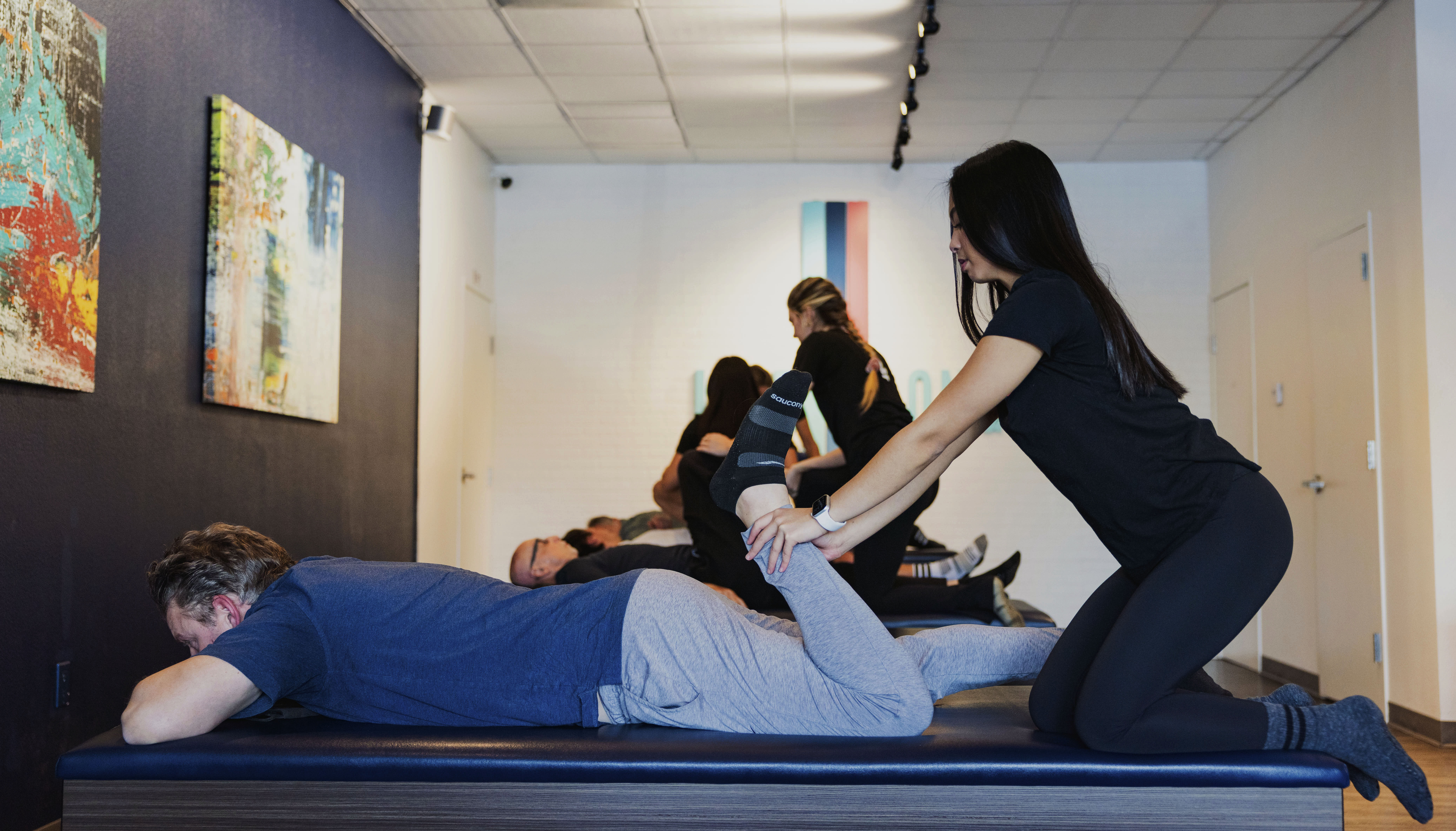Do you need dynamic stretching, or static stretching? With stretching growing in popularity, this question is asked more and more by people who want to experience the benefits of stretching. To answer this, it’s important to understand what these types of stretches are and the purpose they serve!
What is Dynamic and Static Stretching?
Stretching is the act of extending or lengthening a muscle or group of muscles to improve their flexibility and range of motion. This can be done in a variety of ways, including dynamic stretching, and static stretching. While both are forms of stretching, the two differ greatly in their techniques.
Dynamic stretching involves moving the body through a range of motion such as rotating an arm in a clockwork motion. These active movements often mimic movements done during an activity or sport. Dynamic stretching is beneficial for warming up muscles to reduce stiffness and increasing range of motion during physical activity.
Static stretching involves holding the stretch in a static position for an extended period of time. An example of static stretching is holding your arm across your chest for 30 seconds so that you feel tension in the muscles being stretched. Static stretching is beneficial for loosening tight muscles and increasing flexibility.
Do I Need Dynamic Stretching or Static Stretching?
The answer is both! Both dynamic and static stretching are beneficial for one’s flexibility and range of motion. What’s important to know is when you need each stretch.
Dynamic stretching is great for warming up muscles. This type of stretching is best done before a physical activity such as working out at the gym or going for a run. It’s important to exercise caution, as this type of stretching does require active movements. It may not be appropriate if a person is suffering from a recent injury or has very limited mobility.
Static stretching is an appropriate cool down exercise as it can help loosen muscles that get tight during physical activity. Static is especially effective at improving range of motion when paired with proprioceptive neuromuscular facilitation (PNF) stretching. PNF stretching helps the muscles get into a deeper stretch through a push and release technique, allowing for better improvement in flexibility and range of motion. To do this, a person would hold a static position for 30 seconds and then push the muscle into a deeper stretch for a few seconds before releasing. Static stretching is an appropriate option for people with limited mobility and flexibility. However, if someone with limited mobility or flexibility wanted to incorporate PNF stretching, it would be best to do so with a professional to limit risk of injury.
When Do I Need Assisted Stretching?
Dynamic and static stretching can both be done on one's own, without assistance. It is even recommended to do both of these daily, throughout the day as needed.
Another highly recommended form of stretching is assisted stretching! Assisted stretching is when someone assists you with the stretch by helping you hold the stretch longer or deeper. People of all ages and fitness levels are incorporating assisted stretching into their routine because of the amazing benefits they’ve been able to feel versus when they just stretching on their own.
Working with a professional is great for someone with limited mobility, as well as someone who is already very flexible, because of the knowledge and customization they can bring to the stretch. Interested in learning more about working with a highly trained stretch professional?



